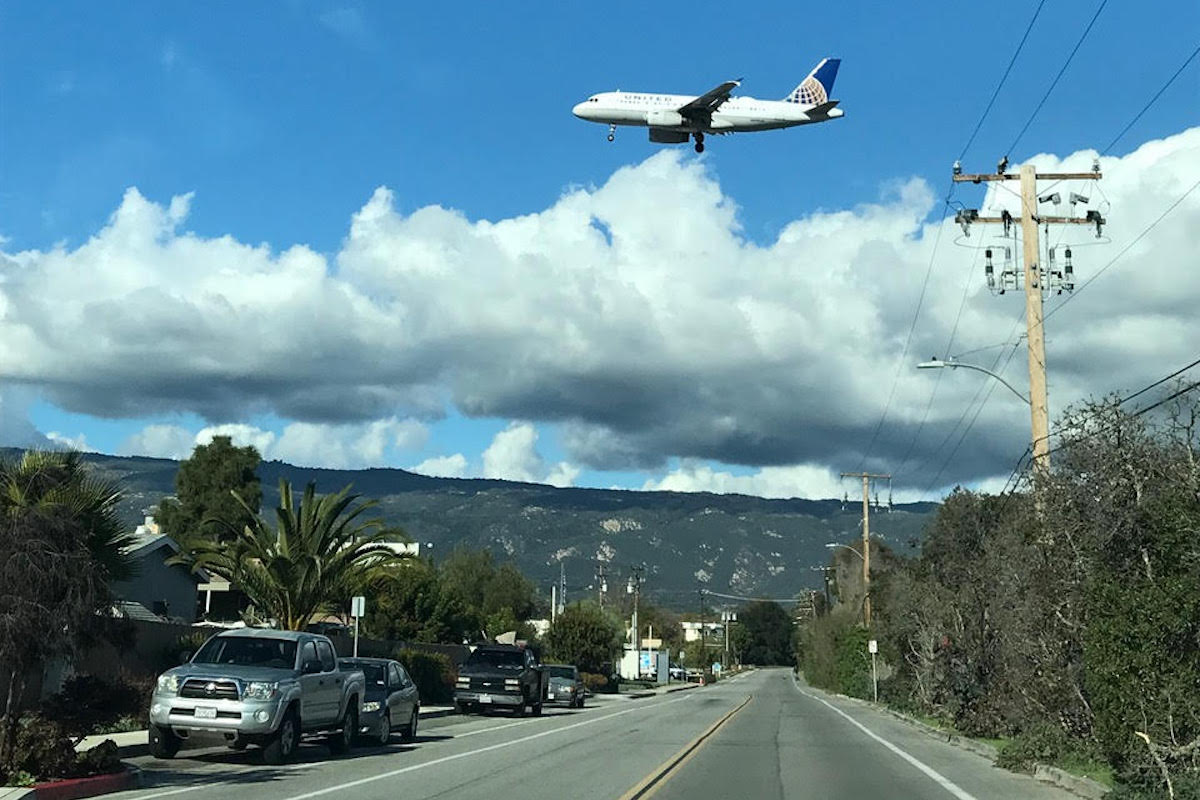Noise Complaints Fly at Santa Barbara City Council Hearing on Airport Master Plan
Hearing Held Ahead of Environmental Review as City Takes 20-Year Look at Improvements Likely to Be Needed at SBA

If the comments landing at the Santa Barbara City Council on Tuesday are any example, what the airport’s update of its master plan needs to concentrate on is noise from aircraft very early in the morning and very late at night. The hearing was the last for comments before environmental review takes place, as the city takes a 20-year look at improvements likely to be needed at the airport.
Councilmember Mike Jordan is among those who live under an airport flight path, on the Mesa in his case. He told Airport Director Chris Hastert that the altitude that jets fly in at made a difference in the noise they produce. Could that be part of the information recorded, he asked. Decibels reported are “the annual, 24-hour average sound level obtained from the accumulation of all aircraft operations,” according to the staff report, and Hastert said altitude didn’t impact the model very much.

They knew they were within hearing distance of the airport when they moved into their house, said Goleta resident Leslie Lund. Now, 24 years later, “We’re asking for more than four hours of uninterrupted sleep,” she said. Some of her neighbors had installed double-pane windows, whole-house air-conditioning, and soundproofed their bedrooms in an attempt to get more sleep.
Lund said four to five flights departed between 5:07 and 6:30 a.m., and an equal number landed between 11:15 p.m. and midnight. Nodding to where Hastert sat in the council chamber, she said they were trying to figure out who owned the big private jet that occasionally came in at 2:30 a.m.
Both Lund and speaker Gail Johnson are on the noise-abatement committee that Hastert formed. Johnson emphasized that noise from helicopters could be minimized if they came in over the Goleta Slough and could land in the south part of the airport. She noted that once or twice a month, Ospreys came in — not the fish-eating bird-of-prey but the Bell Boeing craft with tilting propellers. “And they’re loud,” she said.
Airport neighbor Mike Glick had a darker vision of airport operations, believing laxity or laziness were to blame for big, noisy jets like 737s no longer using Devereux or More Mesa as routes to avoid flying over homes. The airport was expanding yet not following its own noise-abatement rules, he told the council, asserting that flights went overhead as late as 2 a.m. and as early as 5 a.m.

The long-term forecast sees the airport going from about 609,000 passenger boardings in 2023 to 878,000 by 2041. Consultant Mead & Hunt was hired to conduct the master plan update, which has in its sites vertiports ($2.7m), hangars ($102.6m), parking garage ($45m), fuel storage improvements ($8.7m), and reconfiguring the terminal again at some point. The taxiway improvements include removing 15L/33R, heavily used by small aircraft, but leaving the parallel 15R/33L. As much as 90.66 percent of the costs, estimated to total $179 million, could be paid by grants from the Federal Aviation Administration.
As for noise abatement, the staff report states a penalty of added decibels for “noise events” after 7 p.m. and before 7 a.m., but did not state what the consequences would be to aircraft that disturbed people’s sleep. Councilmember Kristen Sneddon interjected that it was indeed impossible to talk when aircraft were flying overhead, and she asked that the plan consider measuring noise differently, perhaps including peak decibels.












You must be logged in to post a comment.